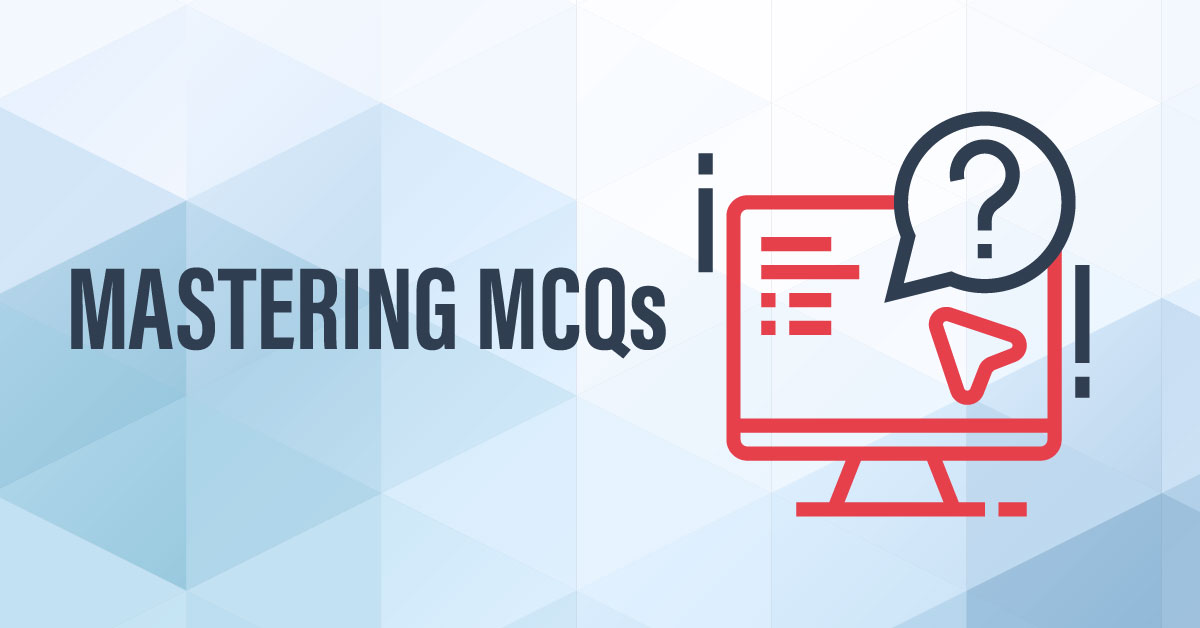Contact Us : 800.874.5346 International: +1 352.375.0772

Five of the six CPA Exam sections feature two testlets of Multiple-Choice Questions that are worth 50% of your total score. ISC makes up 60% of your score as well, which drives the point home that they are more important than ever. While you are likely very familiar with this question type, the CPA Exam is designed to evaluate you at a high level, so do not underestimate them!
Consistent practice is important, and short Multiple-Choice quizzes are a great way to work in study time that might otherwise be difficult. Aim to complete 20 questions in about 30 minutes. Jump straight into reviewing that quiz if you have time, or you can save the review for later.
Reviewing every day will boost your retention and understanding of the topics. You will also improve your test-taking skills, such as educated guessing and recognizing negative questions.
The question stem is the part of the question that contains all of its details, such as facts, figures, and the actual question being posed. Sometimes you won’t need all of the information provided and will have to analyze what you need to answer the question.
Read the last sentence first, especially for long questions. This will most often contain the actual question being asked, which will help you determine what information is relevant.
Predicting the answer will help you ignore distracting answer choices and choose the best answer. The CPA Exam is designed to trick candidates and will often contain misleading answer choices!
Even if your answer is the first choice, read the rest of the answers to be sure! Most likely your initial answer is correct, but there may be a better option you didn’t think of. Becoming a CPA involves using your best judgment.
Part of the reason the CPA Exam is so difficult is that there are sometimes multiple answers that seem correct. Most of the time, these will be choices that look correct but aren’t or that result from common calculation errors. But sometimes you will come across an answer with two or more correct choices.
As a CPA candidate, you must select the most correct answer given the information provided. Be thorough in your reasoning, double-check your calculations, and you’ll be able to select the best answer.
Treat each option like a true or false question and compare it to the answer you believe is correct. Small details can help you decide if one answer choice is better than another.
Answer choices with qualifiers such as “always” or “never” are usually able to be ruled out or confirmed this way. Ask yourself, “do exceptions exist?”
Jumping between questions means you may forget about some when you go back through. CPA Exam candidates should strive to answer each and every question. There are no points given for a wrong answer, but you also won’t get any points for a question you didn’t answer!
If you don’t know the answer to a question and are running out of budgeted time, mark your best educated guess and flag the question for review. The more answer choices you are able to eliminate, the better chance you will have of selecting the right answer. If you have time, you can review your flagged questions.
If you have a review course that gives explanations for every answer choice, take full advantage of the feature. CPA Exam candidates are expected to thoroughly know the testable topics and be able to analyze questions from multiple perspectives.
For each question you get wrong, make sure to read the explanation fully to understand where you made mistakes. Then, try to select your next best answer and see if you’re right. Even if you select the right answer on the next try, read the other two answer choices. Make sure you know why those answers were wrong.
For questions you marked for review, be sure to review them even if you got them right. Just as for the questions you got wrong, you want to make sure you understand why the right answers are right and why the wrong answers are wrong.
Looking for more tips? Check out our full list!
Getting stumped on Task-Based Simulations? Check out our tips to beat the Simulation questions!